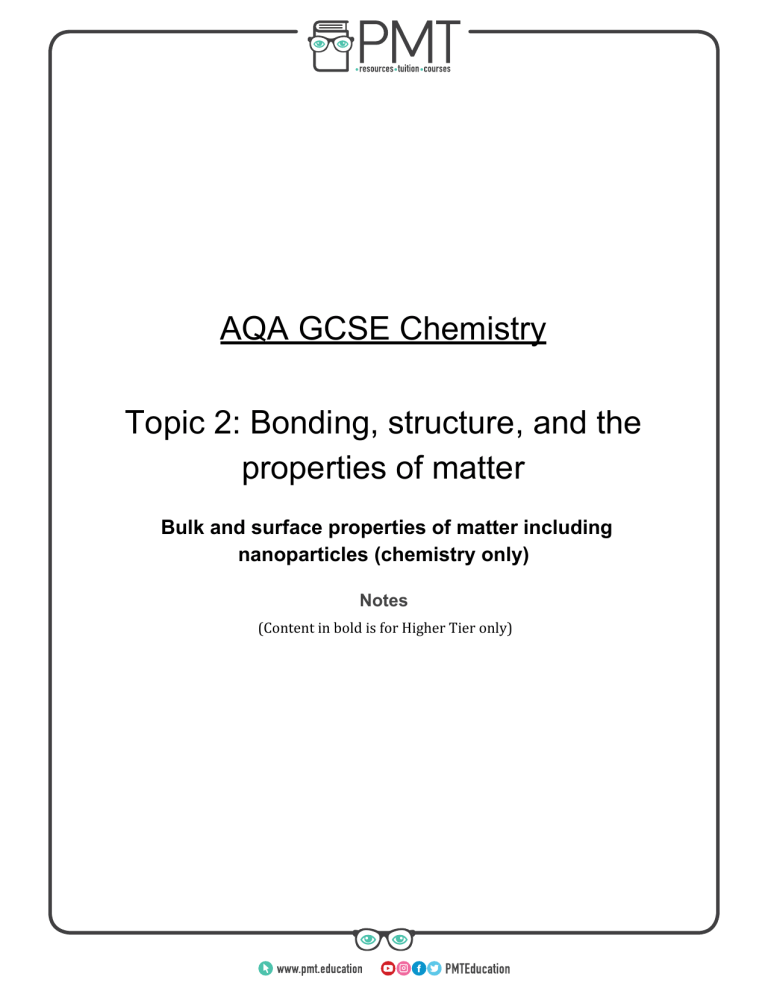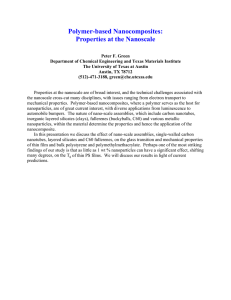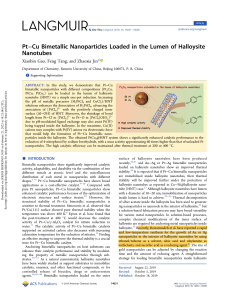
AQA GCSE Chemistry Topic 2: Bonding, structure, and the properties of matter Bulk and surface properties of matter including nanoparticles (chemistry only) Notes (Content in bold is for Higher Tier only) www.pmt.education Nanoparticles ● Nanoparticles are 1-100 nanometers across. ● They contain a few hundred atoms. ● Nanoparticles, a re smaller than fine particles (PM2.5), which have diameters between 100 and 2500 nm (1 x 10^-7 m and 2.5 x 10^-6 m). o Coarse particles (PM10) have diameters between 1 x 10^-5 m and 2.5 x 10^-6 m. o Coarse particles are often referred to as dust. ● As the side of cube decreases by a factor of 10 the surface area to volume ratio increases by a factor of 10 ● Nanoparticles involve fullerenes. ● A nanoparticle has different properties to the ‘bulk’ chemical it’s made from, because of their high surface area to volume ratio. It may also mean that smaller quantities are needed to be effective than for materials with normal particle sizes. e.g fullerenes have different properties to big lumps of carbon. Their uses ● They have a high surface area to volume ratio, and therefore would make good catalysts. ● They can also be used to produce highly selective sensors. ● Nanotubes could make stronger, lighter building materials. ● New cosmetics, e.g sun tan cream and deodorant. They make no white marks. ● Lubricant coatings, as they reduce friction. These can be used for artificial joints and gears. ● Nanotubes conduct electricity, so can be used in small electrical circuits for computers. ● possible disadvantages: there are some concerns that nanoparticles may be toxic to people. They may be able to enter the brain from the bloodstream and cause harm. www.pmt.education






